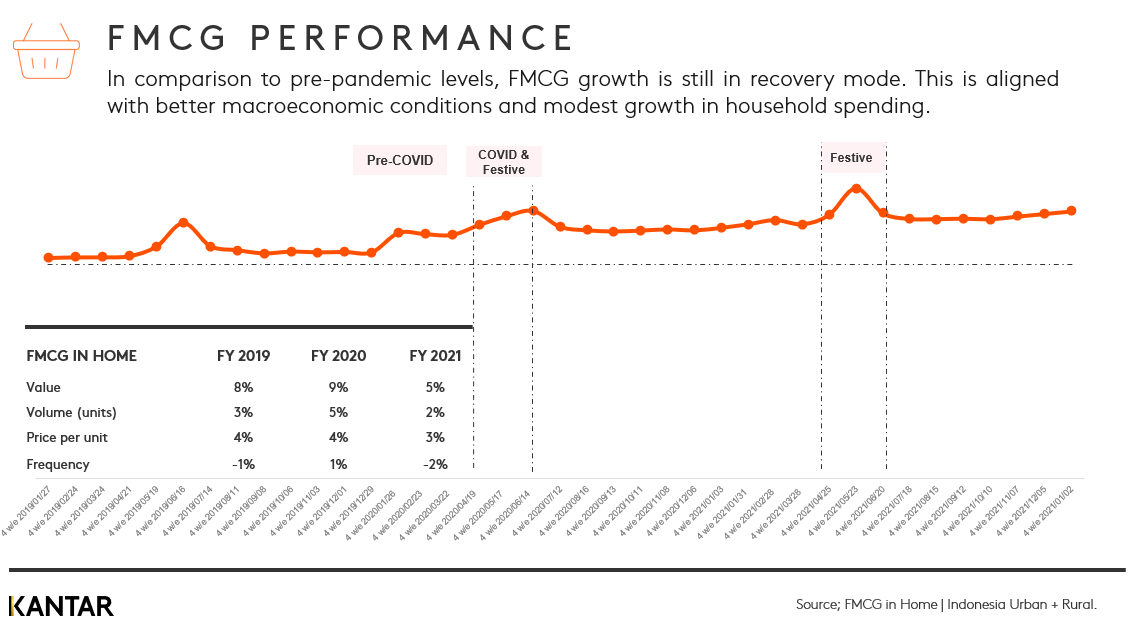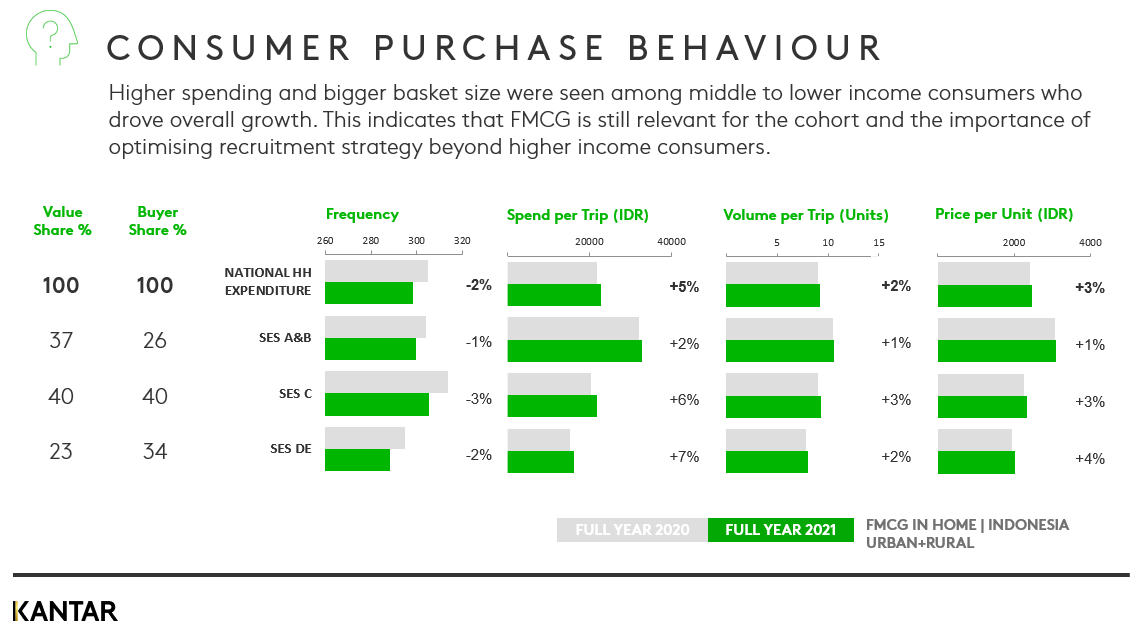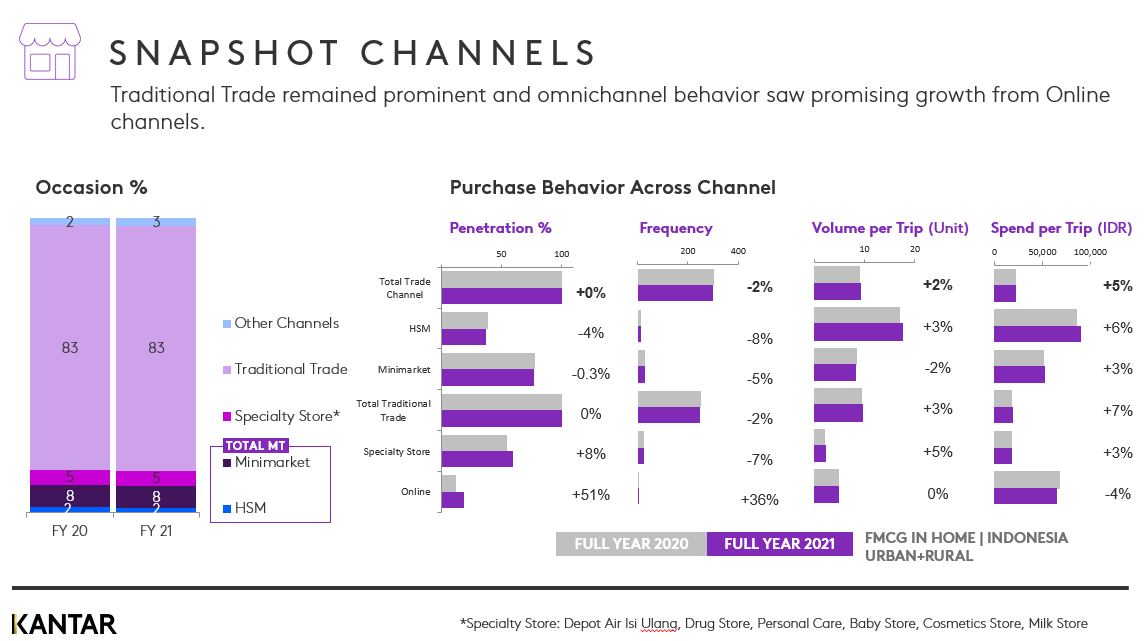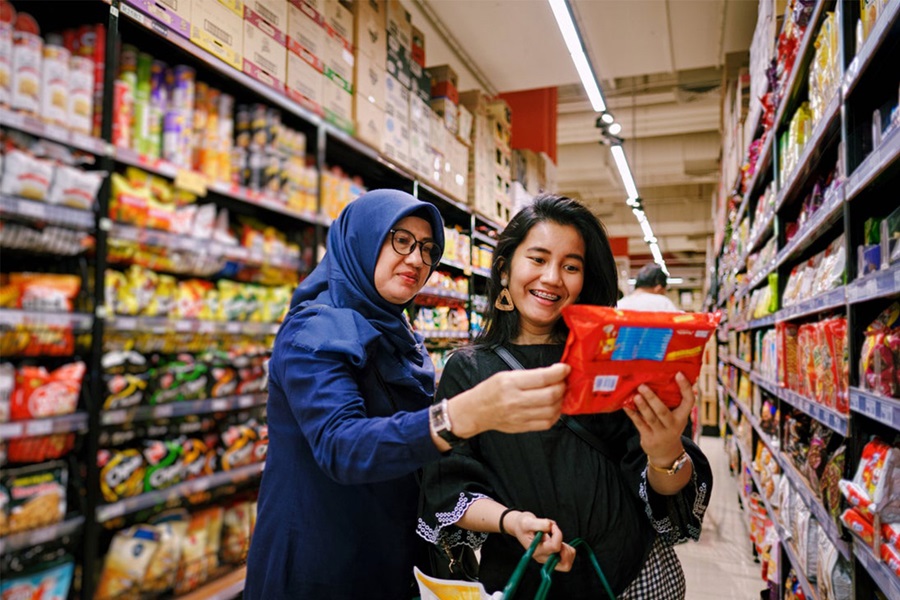Indonesia’s FMCG market showed positive signs of recovery in 2021, with value growth of 5% – although this wasn’t as strong as the previous year’s 9% increase in household FMCG spending. Volume sales grew by a modest 2%, compared with 5% in 2020.
Lower frequency has become one of the ‘new norms,’ with people reducing the number of trips they make by 2% despite the gradual increase in mobility. This suggests it will be most important for brands to encourage bigger basket sizes to compensate for the continued limiting of trips.

Rising prices haven’t hit consumer confidence
Price inflation arrived in Indonesia during the last quarter of 2021, although this hasn't had an impact on consumer confidence, which improved to close the gap with pre-pandemic levels. This was thanks to the good progress that had been made on managing the pandemic, along with improved macroeconomic conditions.
Indonesia’s economy slowly recovered during 2021, supported by loosened COVID-19 restrictions and a rising vaccination rate, culminating in 5.02% growth in the last quarter. Over the year as a whole, GDP rose by 3.69%, compared with a drop of 2.07% the previous year.
Who’s spending most, and where?
Middle to lower class consumers spent the most in 2021, and they also had the biggest baskets, indicating that brands must optimise their recruitment strategies to target and engage cohorts beyond the upper classes.

Spend in food and personal care categories was highest over the year, with value growth of 8% and 5% respectively, due to the bigger basket sizes being bought during the pandemic. Value within the food sector returned to normal pre-pandemic levels in 2021, after the spike we witnessed during the lockdown. Other sectors are catching up, in particular beverages, the category that was impacted the most due to restricted mobility of consumers.
Ecommerce isn't an opportunity – it’s mandatory
Looking at FMCG channels, Traditional Trade remained prominent in the Indonesian retail landscape, retaining 100% penetration. Growth in omnichannel shopping behaviours can be seen, and having a strong presence across both online and offline stores has become a hygiene factor for FMCG brands.
Ecommerce is the only channel that has been able to grow in recent years – with a 51% increase in penetration between 2020 and 2021, and a rise in shopping frequency of 36%. The increasing uptake means FMCG brands need to craft strategies to reach their shoppers online, and to be able to stand out. It’s vital to offer shoppers a value for money proposition, and reformulate the recruitment strategy for each category.

Adoption of the internet accelerated in Indonesia in 2021, as more people were forced to carry out daily activities and tasks virtually and remotely: 77% of households now use the internet, compared with just 47% in 2018. In particular, the medium has risen in relevance among young upper-middle class consumers living in major cities. This suggests an opportunity for brands to extend the reach of their ecommerce services to millennials beyond key cities and the upper classes.
These fast-evolving dynamics make it essential for brands to keep pace with trends in the market, and how they differ from one shopper demographic to another.
Fill in the form below to download our latest Indonesia FMCG Monitor for the full year of 2021.

